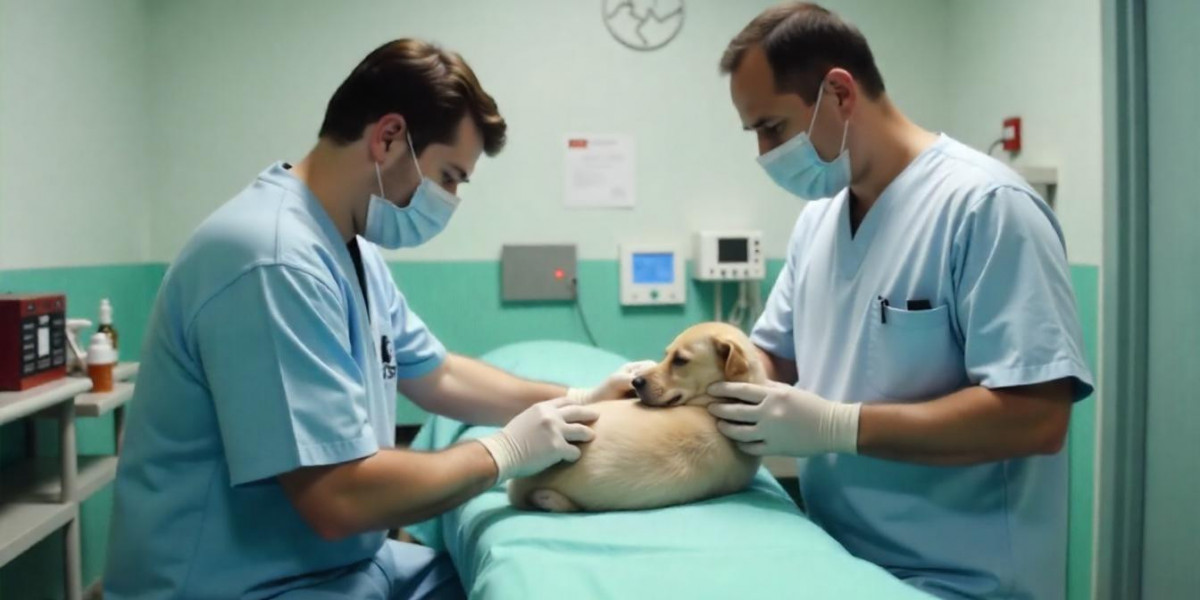When your pet needs surgery or a medical procedure, anesthesia ensures they remain safe, comfortable, and pain-free. At animal hospitals in Surrey, veterinarians use different types of anesthesia based on the pet’s health, the procedure, and the expected recovery time. This article explains the types of anesthesia used, how they work, and what pet owners can expect. With clear insights and expert guidance, you’ll feel confident about your pet’s care.
What Is Pet Anesthesia?
Anesthesia is a medical process that uses drugs to prevent pain and keep your pet calm during procedures like surgeries, dental cleanings, or diagnostics. It can make your pet unconscious or sedate them lightly, depending on the need. Veterinary teams in Surrey follow strict protocols to ensure safety, using advanced monitoring equipment to track heart rate, breathing, and oxygen levels.
Types of Anesthesia Used in Surrey Animal Hospitals
Surrey animal hospitals use three main types of anesthesia: general, local, and sedation. Each serves a unique purpose, and veterinarians choose the best option for your pet.
1. General Anesthesia
General anesthesia makes your pet completely unconscious and unaware of pain. It’s used for major surgeries like spaying, neutering, or orthopedic procedures. The veterinarian administers drugs through an intravenous (IV) line or by inhalation (gas). Common drugs include propofol for IV and isoflurane for gas.
General anesthesia requires careful monitoring because it affects the heart and lungs. Surrey vets use tools like pulse oximeters and ECGs to keep your pet stable. Risks are low—studies show a 0.17% risk of complications in dogs and 0.24% in cats—but pre-anesthetic blood tests help reduce these risks by checking for hidden health issues.
2. Local Anesthesia
Local anesthesia numbs a specific area of your pet’s body, like the skin or a tooth, without affecting consciousness. It’s ideal for minor procedures, such as removing small tumors or stitching wounds. Drugs like lidocaine or bupivacaine are injected into the area.
This type is safer than general anesthesia because it doesn’t impact the whole body. Pets stay awake, so there’s less need for intensive monitoring. However, local anesthesia isn’t suitable for major surgeries requiring full-body relaxation.
3. Sedation
Sedation calms your pet and reduces anxiety without making them unconscious. It’s used for non-painful procedures like X-rays, ultrasounds, or grooming. Sedatives, such as dexmedetomidine or acepromazine, are given by injection or orally.
Sedation is less intense than general anesthesia, with fewer risks. Pets may feel drowsy but can usually recover quickly. Surrey vets often combine sedation with pain relief for procedures that cause mild discomfort.
How Veterinarians Choose the Right Anesthesia
Choosing the right anesthesia depends on several factors:
- Pet’s Health: Older pets or those with heart, liver, or kidney issues may need safer options like sedation or local anesthesia.
- Procedure Type: Major surgeries require general anesthesia, while minor ones may only need local or sedation.
- Pet’s Breed: Brachycephalic breeds (e.g., bulldogs, pugs) are at higher risk for breathing issues, so vets adjust anesthesia protocols.
- Pre-Anesthetic Testing: Blood tests and physical exams help identify risks before anesthesia is given.
Surrey animal hospitals prioritize safety by tailoring anesthesia plans to each pet. For example, IV fluids are often used during general anesthesia to maintain blood pressure and speed recovery.
Safety Measures for Pet Anesthesia in Surrey
Pet anesthesia in Surrey is very safe when handled by trained professionals. Veterinary teams follow strict guidelines to minimize risks:
- Pre-Anesthetic Exams: Vets check your pet’s heart, lungs, and overall health to catch any issues.
- Monitoring Equipment: Devices track vital signs like heart rate, oxygen levels, and temperature during procedures.
- Trained Staff: Board-certified anesthesiologists or skilled technicians oversee anesthesia, ensuring quick responses to any changes.
- Post-Procedure Care: Pets are monitored closely as they wake up, with pain relief provided as needed.
Studies show that anesthesia-related deaths are rare, with a risk of 1 in 100,000 for healthy pets. Surrey hospitals use evidence-based standards to keep this risk even lower.
What to Expect Before, During, and After Anesthesia
Before Anesthesia
Your vet will ask you to fast your pet (no food for 6-12 hours) to prevent vomiting. You’ll also share your pet’s medical history, including medications or past reactions. Pre-anesthetic blood tests or X-rays may be recommended, especially for older pets.
During Anesthesia
Your pet will be closely monitored by the veterinary team. For general anesthesia, they’ll place an IV catheter and use machines to track vital signs. The procedure will be done in a sterile environment to prevent infections.
After Anesthesia
Most pets wake up within minutes to hours, depending on the anesthesia type. They may seem groggy or unsteady at first. Your vet will provide pain relief and instructions for home care, like limiting activity or giving medications.
Risks and How They’re Managed
While anesthesia is safe, there are rare risks, including allergic reactions, breathing problems, or organ stress. Surrey vets reduce these risks by:
- Using reversible anesthetics that wear off quickly.
- Providing oxygen and fluids during procedures.
- Checking for conditions like heart disease or diabetes beforehand.
If your pet has a history of health issues, discuss them with your vet to ensure a safe plan.
Why Choose a Surrey Animal Hospital for Anesthesia?
Surrey animal hospitals, like Cedar Hills Animal Hospital, are known for their high standards and compassionate care. They use modern equipment, follow the latest guidelines from the American College of Veterinary Anesthesia and Analgesia, and employ skilled teams to keep your pet safe. Whether it’s a routine dental cleaning or complex surgery, you can trust their expertise.
FAQs About Pet Anesthesia in Surrey
1. Is anesthesia safe for my pet?
Yes, anesthesia is very safe when administered by trained professionals. Risks are low, especially with pre-anesthetic testing and monitoring. The risk of complications is about 0.17% for dogs and 0.24% for cats.
2. How do I prepare my pet for anesthesia?
Fast your pet as directed (usually 6-12 hours), share their medical history, and follow your vet’s instructions. Avoid giving medications unless approved by the vet.
3. How long will my pet take to recover from anesthesia?
Recovery depends on the anesthesia type. Sedation wears off in a few hours, while general anesthesia may take up to a day for full recovery. Your vet will monitor your pet until they’re alert.
4. Can older pets be safely anesthetized?
Yes, but older pets may need extra tests (like bloodwork or X-rays) to check for health issues. Vets adjust anesthesia to minimize risks for senior pets.
5. What should I watch for after my pet’s procedure?
Look for signs like vomiting, lethargy, or swelling at the procedure site. Contact your vet if your pet seems in pain or doesn’t improve within 24 hours.
Conclusion
Understanding the types of anesthesia used in Surrey animal hospitals helps you make informed decisions for your pet’s care. From general anesthesia for major surgeries to sedation for simple procedures, veterinarians prioritize safety and comfort. With advanced monitoring, pre-anesthetic testing, and skilled teams, Surrey’s animal hospitals ensure your pet is in good hands. For trusted, expert care, contact Cedar Hills Animal Hospital to discuss your pet’s needs.









